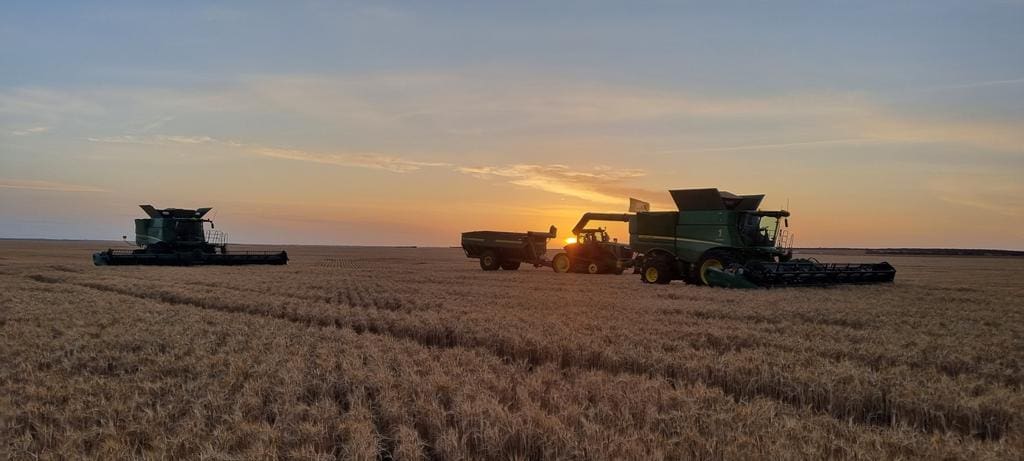
Harvesting this week at Cascade in the western part of WA’s Esperance zone. Photo: Paul Carmody
THE Grain Industry Association of Western Australia has cut its estimate for the winter crop now being harvested to 14.95 million tonnes (Mt), down 3.5 percent from 15.5Mt forecast in its September Crop Report.
GIWA Crop Report author Michael Lamond said the past month has seen the worst-case scenario eventuate across all grain-growing regions of WA.
“No further spring rain and unseasonably hot windy conditions did not allow any increase in the grain yield potential of the better crops, and pushed those crops that were already on the edge of crashing to drop further potential,” Mr Lamond said.
Harvest is under way in WA’s central and northern grain-growing regions, and has just started in the state’s south on early-sown barley and canola crops.

By commodity, estimated wheat production is down 375,000t over the month, barley has dropped 105,000t, and canola and lupins are down 40,000t and 30,000t respectively, while the oats and pulse estimates are unchanged.
Mr Lamond said initial reports indicate the actual tonnage produced for WA is going to be less than expected just prior to the start of harvest a few weeks ago.
“Persistent hot temperatures, combined with windy days and no further falls of rain, have driven grain yields down in all regions of the state.
“Most growers are reporting actual yields to be less than they looked when standing in the paddock.”
Screenings evident
Mr Lamond said hot temperatures and a lack of sub-soil moisture during the final stages of grain fill have taken the top off the potential grain yields and reduced grain quality, with many crops now going to have issues with screenings.
“The one-off low rainfall event in early September appears to have helped crops in the central region avoid very high screenings, although this is not the case in the majority of the northern regions.”
While 15Mt of grain for WA is well down on WA production of the past few years, Mr Lamond said it will still be a good result considering the lower area planted, the actual rainfall and its timing.
“On water-use efficiency alone, total grain production would have been 30pc less 10 years ago.”
Hay production well down
Mr Lamond said growers who got out of oaten hay when prices dropped mostly replaced those paddocks with canola.
“The result has been a big reduction in the area of oats destined for hay, particularly in the traditional northern hay production areas of the state and around the low-rainfall eastern Lakes District.
“There was not a lot of area cut for hay this year and this is likely to remain the case even with greater access to export markets.
“Even with new-season hay prices back up to the higher decile price ranges, the quick exit out of hay into other crops is not likely to flip to a quick return to hay in the near future, unless there is a significant canola price shock.”
Mr Lamond said there were also positive signs on the pulse-marketing front, and while plantings have been down in recent years, they are a good agronomic fit.
“It is expected that faba bean plantings in particular will increase in 2024.”
Source: GIWA
Further detail on crop conditions in individual WA port zones can be found as part of the full report on the GIWA website.



HAVE YOUR SAY